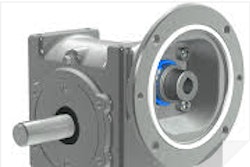
There are several factors influencing the need for data analytics solutions:
Manual machine and equipment condition monitoring
• Increasing reliability demands
• Need for workforce optimization
• Switch from manual to automated data collection
Changing client demand
• Reduced lead times to market
• Increased flexibility of production to support greater customization of production
• Cost control
• New challenges in scaling team’s services to meet client demand
Data integration
• Unconnected sets of data, or platforms that aren’t interoperable, increase the challenges of collecting data for analytics
• Minimal levels of data integration cause additional work, as well as labor required to provide proof of outcomes in the planning phase
The following examples highlight some of the pain points companies identified that might be resolved through the use of IIoT related technologies:
• An on-going problem is reducing lead times to market for customers, while also increasing the flexibility of production to support greater customization of production. While doing so, manufacturers must continue to improve quality and reduce costs to remain competitive.
• Reducing the effort required for production planning of product variants as well as meeting increased workloads with higher efficiency. Another objective is to improve the quality of individual project reports - which are important for management decisions - and to facilitate the understanding of production process changes.
• Businesses with expensive and critical assets, such as the power generation industry, face challenges in monitoring the condition of machines manually. Manual data collection is very labor intensive - in one example, where almost 60,000 collections a month were taken, analysts were typically spending 80% of their time collecting the data and only 20% of their time analyzing it. This lead to both inconsistent diagnosis and limited risk assessment.
• Transitioning from a manual to an automated process for data capture was identified as an important step in asset health monitoring. This supports both the capture of more data, and removes human error in recording data, supporting improved datasets from which analytics is conducted.
For more details about the Big Data in the packaging and processing industry, download the FREE white paper here.
Source: PMMI Business Intelligence “How to Utilize Big Data to Enhance Manufacturing Processes”






















